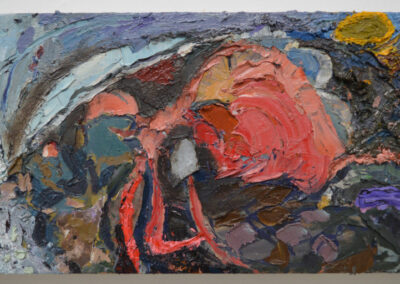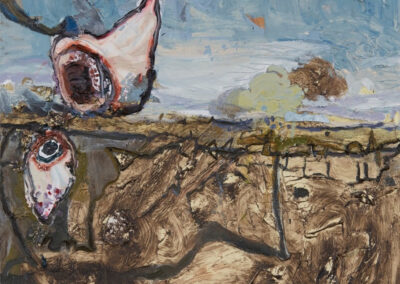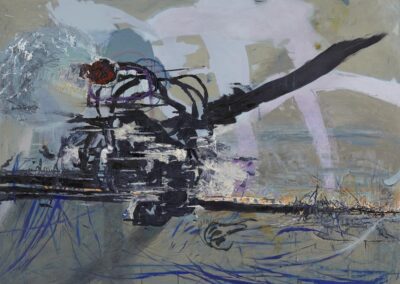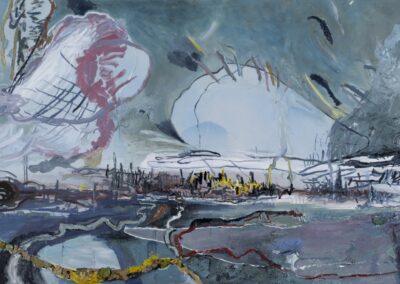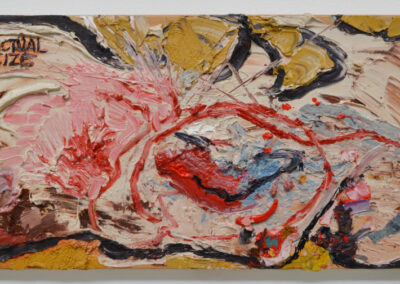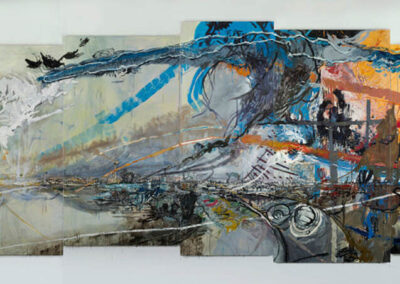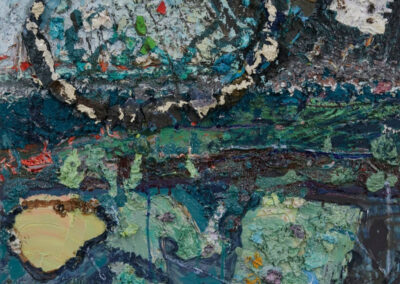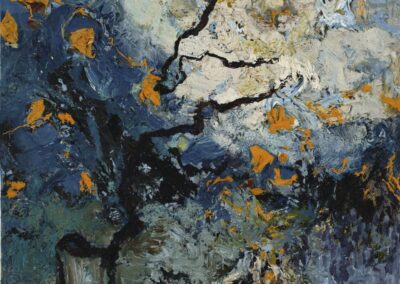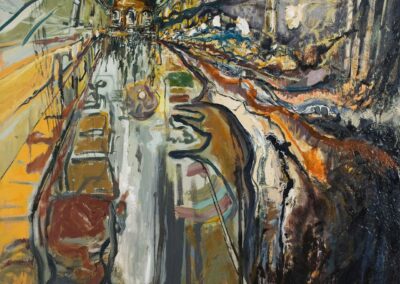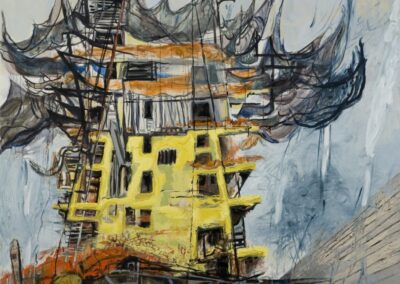Our next Artist You Need To Know is Susanna Heller (1956 – 2021).
Susanna Heller was born in New York, NY but lived in Montreal from the age of 7. She earned her BFA from the Nova Scotia College of Art and Design in 1977. This was during the heady days of the institution when it was internationally renowned, and she studied with artists like Gerald Ferguson, Eric Fischl, Mira Schor, Paterson Ewen, Garry Kennedy, June Leaf, Laurie Anderson and David Askevold. In 1978 she returned to NYC, and from 1981 lived and worked in Brooklyn. The city within which she lived was often the framework for her paintings, acting as a starting point for a number of her abstracted yet personal narratives in her artwork.
From the accompanying text to a 2020 exhibition at Olga Korper Gallery: “Heller’s process is intense and precise. She walks every day up and down the streets of Brooklyn and Manhattan wildly sketching the urban landscape. Influenced by the works of Paterson Ewen and J. W. Turner, Heller’s paintings focus on space and movement, offering a constant sense of motion on the canvas. Through her application of unexpected colour and thickly layered paint – plus anything else she can find, a torn-up palette or an errant rubber glove – Heller’s work brings clarity to the energy, smells and sounds of the city; perspectives are distorted, and cranes sweep across the sky as though holding up the clouds.”
Heller offered the following about her aesthetic: “I really don’t know how to say it intensely enough, but it’s not place that really matters to me, but city that really matters to me….I know it’s irrational, but that’s the beauty of painting! It’s a powerful place to show that non-rational layering and multiplicity of experience can and does exist at one time in one place and in a single viewer! [….] I think you even experience a painting that way: you see the way it looks, and then you wander into it and you get stuck in a little part of it and then you wander along, travel along. Then you step back again and see the whole thing differently, my paintings are meant to be watched in that kind of time.”
Her work was often informed by suffering and trauma, to the point that some critics have spoken of how ‘catastrophe was her muse.’ This can be seen in her seminal series Phantom Pain, which chronicled through paint how her husband William DiFazio fell ill to necrotizing fasciitis. Heller also suffered from “a fractured spine [but] painted through…complex health issues affecting her vision, her balance and reaching the limits of her tolerance for pain. Heller’s studio was her sanctuary and rehab in one.” Themes of absence, fragility and destruction can be found in her work, as the city became the body: “The lines crisscrossing and circumnavigating the limits of the canvas start to look more and more like organs. All the guts of the city, spilling forth. But all the glory, too.” (both quotes from here)
Heller was awarded numerous Canada Council grants: in 2005 she received The Joan Mitchell Foundation Painters & Sculptors Grant Award and in 1988 was the recipient of the John Simon Guggenheim Memorial Foundation Fellowship. Notable exhibitions have been mounted at Mount Saint Vincent University Gallery, Museum London, Olga Korper Gallery and Magnum Mertz Gallery. Heller’s work can be found in many significant collections, both public and private. These include: The Art Gallery of Ontario, Air Canada Corporation, Canada Council Art Bank, Museum London, National Bank Financial, Oakville Galleries, Toronto Dominion Bank and The Woodbridge Group. A more complete listing of her achievements can be seen here.
In a conversation with artist Medrie MacPhee (which can be read here) that took place not long before her passing, Heller asserted that it’s necessary to “…understand that I’m not a landscape painter. I paint the state of the world, using metaphors from the things I see. And I’m more interested in urban environments. Because I like people and I like to be around crowds.”
After a final year of great physical difficulty (but still sketching and working, even while in her hospital bed) Susanna Heller died in May, 2021.
A line from a tribute to Heller, found at the Olga Korper Gallery site, is a summation of her life and work (as the two were entwined) that offers an appropriate end to this feature: “Over the last decade Susanna has been met with more trauma and loss than any one human could be expected to endure. She rose again and again to meet each obstacle, and returned with passionate loyalty to her studio where she created astonishing work that captured the depth and breadth of her life experience.”

